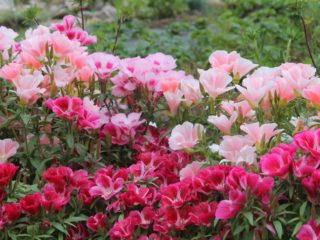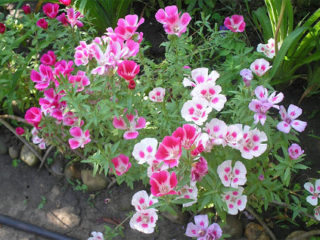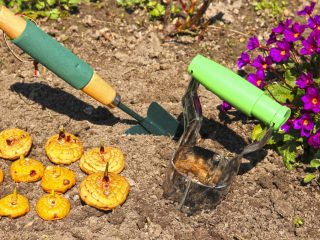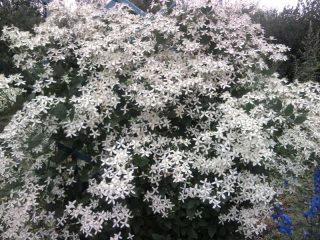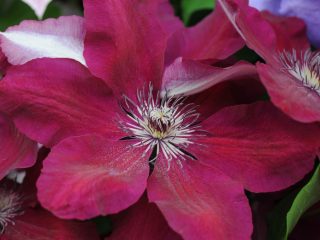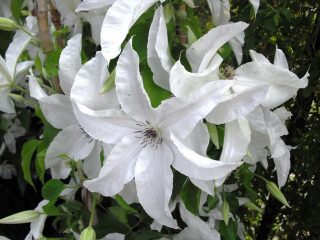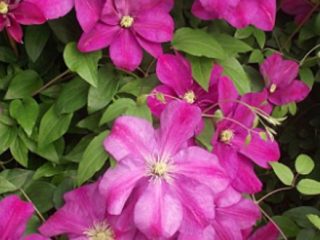Content
Godetia is a lushly flowering small bush. The plant is unpretentious and stress-resistant, so cultivation techniques are not complicated. Growing godetia from seeds at home allows you to enjoy the magnificent flowering of satin inflorescences of the most incredible shades throughout the summer season (right up to the frosts).
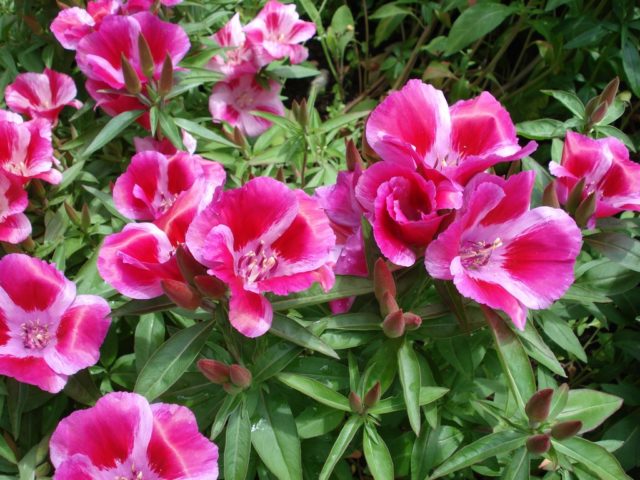
Large Godetia flowers add special charm and elegant charm to flower beds and flower beds.
Description of godetia seeds + photo
At the end of the growing season, in place of faded godetia inflorescences, fruits are formed - cylindrical seed pods with four smooth edges. They contain small seeds. The germination of seed material, when properly stored (in a dry, dark place), lasts up to 4 years.
At home, growing godetia from seeds is possible in two main ways: seedlings and sowing in open ground.
Sowing seed material in open ground is most preferable for southern regions with a warm climate.Direct cultivation of godetia from seeds in the ground is a simple and less traumatic method for plants, since due to careless handling of crops, some of the seedlings die when picked and transplanted into beds. Sowing work is carried out before winter in November or May. Flowering occurs after 80-90 days (presumably in August) and continues until frost. This method of cultivation allows for later flowering, so many gardeners prefer to sow godetia seedlings on their own.
The seedling method is preliminary sowing of seeds indoors in March, followed by transplanting into open ground after establishing a stable ambient temperature without noticeable night frosts in May. This method is suitable for the central and northern regions of Russia. Godetia bushes grown by seedlings begin to bloom as early as July and until late autumn amaze with the incredible splendor of the inflorescences.
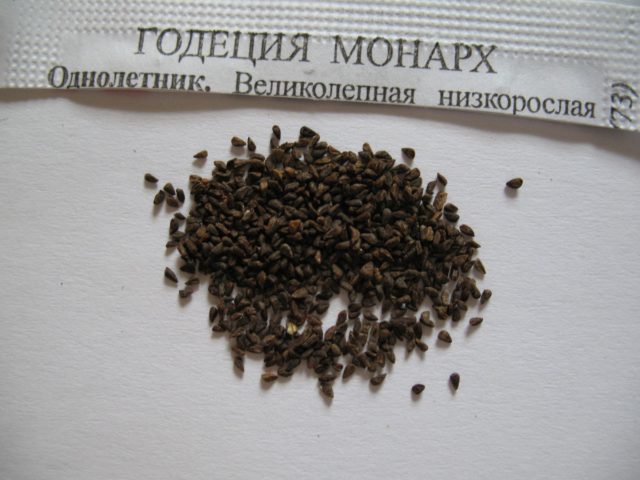
Various hybrid varieties of azalea-shaped, double, dwarf, bushy Godetia are grown only from seeds
The nuances of growing godetia seedlings from seeds
Planting godetia with seeds and caring for young plants is a classic algorithm. To obtain healthy seedlings, you should familiarize yourself with the important nuances of growing:
- it is necessary to select a suitable soil (godecia prefers neutral loamy or slightly acidic);
- since godetia seeds are very small, for a more even distribution in the soil, they are mixed with fine river sand and sown in prepared containers;
- for seed germination it is necessary to create a greenhouse effect;
- crops need to be ventilated every day (remove the cover for a short time, remove condensation on glass or film);
- Before transplanting into open ground, seedlings are gradually hardened over 2 weeks.
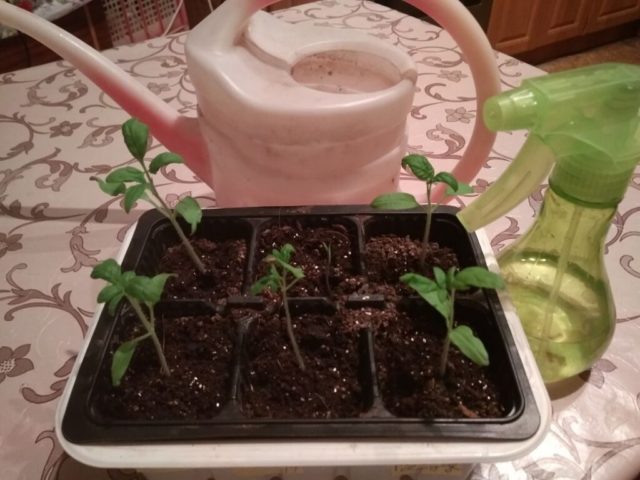
Crops should be moistened with caution using a spray bottle.
How to plant godetia seedlings
Planting godetia seeds for seedlings is quite labor-intensive, but the most suitable method for most gardeners, which allows the crop to flower earlier (in July). In indoor conditions, young plants develop until May.
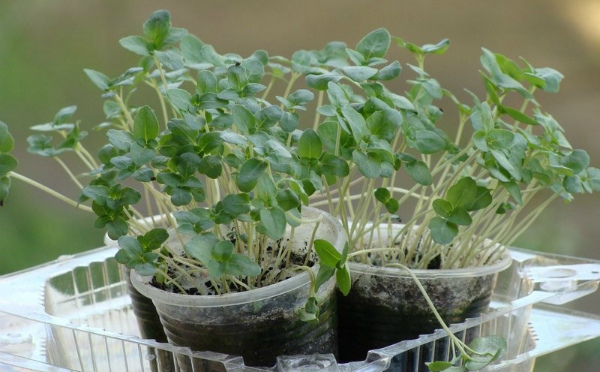
Godetia sprouts, hardened and strengthened in indoor conditions, are transplanted into open ground with the onset of consistently warm weather.
When to plant godetia seedlings
Godetia seedlings are planted in March. At this time of year, the daylight hours are sufficiently comfortable for seed germination (12 hours).
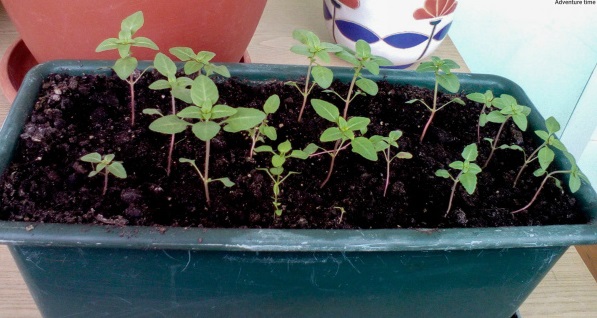
Experienced gardeners recommend sowing godetia seeds for seedlings at the end of March or at the beginning of April
Selection of container and soil preparation
To grow godetia from seeds, you need to choose shallow wooden or plastic containers (up to 15 cm high) for sowing seedlings. Before filling with soil mixture, the boxes are disinfected. A sufficiently high drainage layer must be placed at the bottom of the container, since the crop does not tolerate stagnation of moisture.
The soil for seedlings should be loose and rich in nutrients. You can prepare a soil mixture at home from equal parts of peat, garden soil and river sand. To prevent fungal infections, the soil must be spilled with a solution of potassium permanganate or disinfected in another way.

Godetia prefers slightly acidic soils to highly alkaline soils.
Seed preparation
The culture is an unpretentious plant, resistant to pathogens. But before sowing godetia seeds, they should be treated with a weak solution of potassium permanganate. The smallest grains are placed in textile bags and left for 1 hour in water slightly colored with manganese (1.5% solution).
Since godetia seed material is exceptionally small in size, for greater efficiency of placement in the ground, they are mixed with sifted river sand, and then distributed over the surface of the seed box.
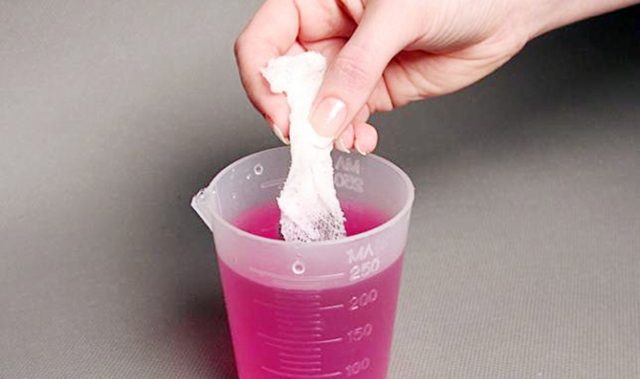
Particular attention should be paid to disinfection of seeds, soil and planting containers
How to sow godetia for seedlings
It is necessary to sow godetia seeds for seedlings according to the general algorithm:
- the soil in the seedling container is pre-moistened;
- after complete absorption of moisture, godetia seeds mixed with fine river sand are carefully distributed over the surface of the soil;
- The seeds are sprinkled with a small layer of peat (up to 0.5 cm), without pressing down.
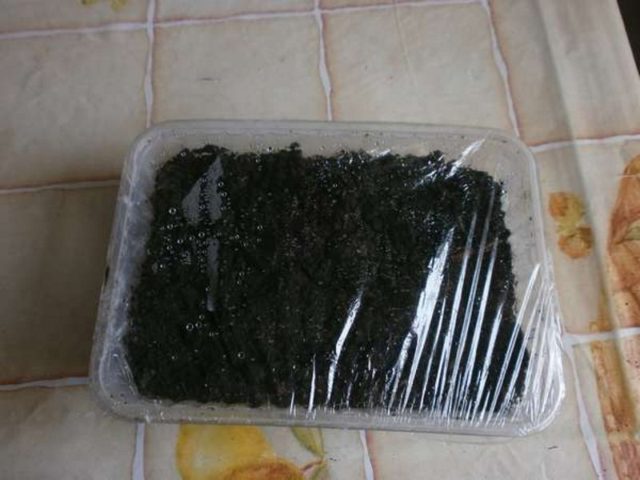
After placing the seeds in the soil, the greenhouse effect necessary for germination should be provided
How to grow godetia seedlings
You can plant godetia seeds for seedlings at home, since the ornamental plant does not require complex, professional care. It is enough to provide a comfortable microclimate, proper watering and fertilization, and promptly plant the sprouts.
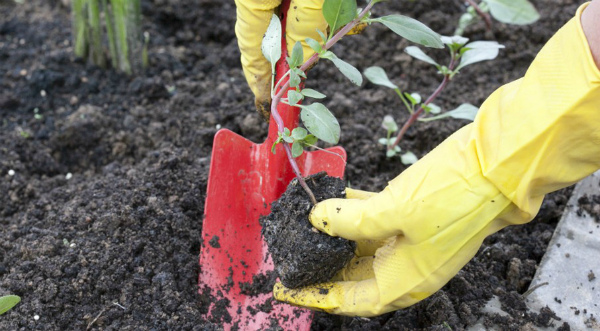
From the moment of sowing seeds for seedlings to transplanting into open ground, 2 months pass
Microclimate
The most comfortable temperature for germination of godetia seeds under a film coating or glass is considered to be room temperature up to + 22 ⁰C.
Sprouts will appear faster if you place the crops in a bright and warm place.
Drafts are strictly not allowed for godetia seedlings.Plants can die at the slightest drop in temperature.
When the first shoots appear, the cover is removed.
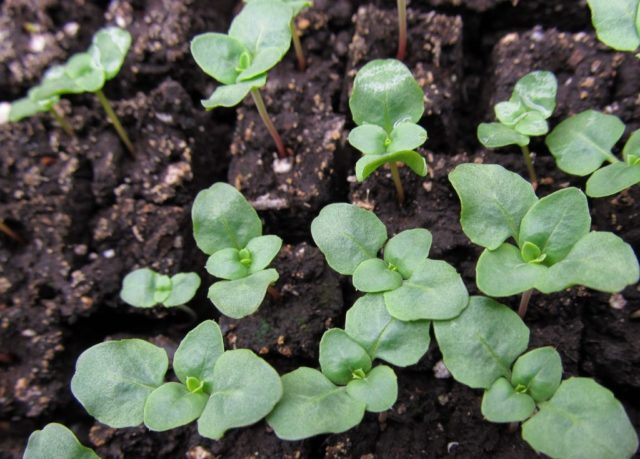
Condensation that accumulates on the film cover or glass should be removed daily and the seedlings should be ventilated regularly
Watering and fertilizing schedule
Godetia seedlings require gentle watering as the soil dries out. To prevent the seeds from being washed into the deeper layers of the soil, moisturizing is done using a spray bottle. Seeds will germinate faster if you water the soil with warm water.
Complex formulations for seedlings with a low nitrogen content can be used as fertilizers. It is necessary to fertilize 1-2 times a month.
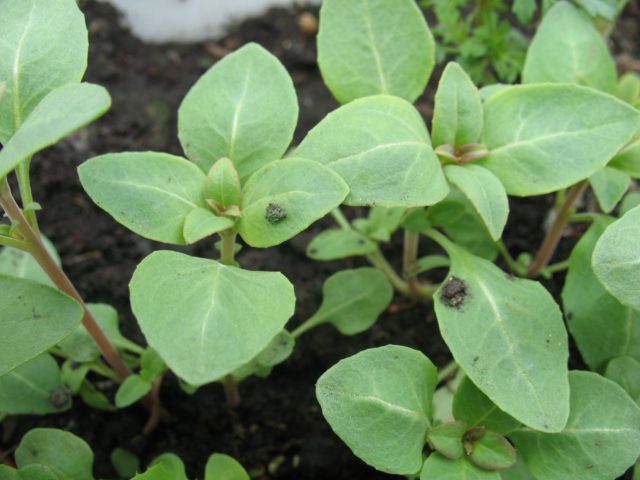
Godetia seedlings require moderate watering
Picking
When two or three true leaves appear, the seedlings are planted in separate pots up to 20 cm high. You can plant 2-3 plants at a time in one container. The seedlings are carefully removed from the box along with a lump of earth, the soil is lightly shaken off, and the roots are freed. The central root is shortened by ¼ of its length, and the plants are transplanted into a disinfected soil mixture. Pruning the roots helps stimulate the growth of a healthy root system.
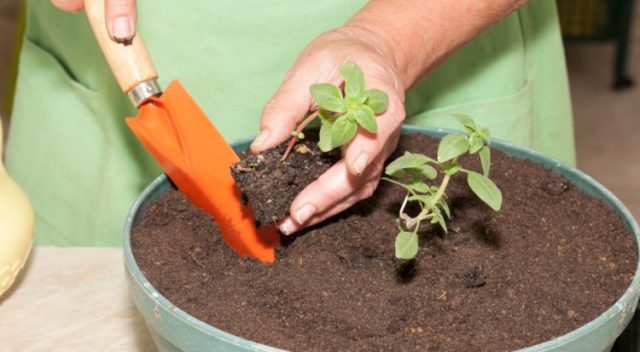
Picking is carried out 2-3 weeks after sowing
Transplantation into the ground
Seedlings are transplanted into open ground in May. Before moving the seedlings, the plants are gradually hardened off over a period of 2 weeks.
The height of godetia seedlings at the end of May or at the beginning of June reaches 6 cm. By the time consistently warm average daily weather sets in, the strengthened and hardened seedlings of the ornamental crop are ready for rooting in their permanent place of residence.
For transplantation, you should choose a cloudy day.
Loamy soil and well-lit areas are most preferable for godetia.
The scheme for planting the crop in the ground is 25x25 cm.
After transplantation, the following agricultural practices should be observed:
- moderate watering without waterlogging;
- regular regime of loosening the soil and removing varietal grasses;
- compliance with the feeding schedule with mineral fertilizers (containing potassium and phosphorus) during the formation of inflorescences.
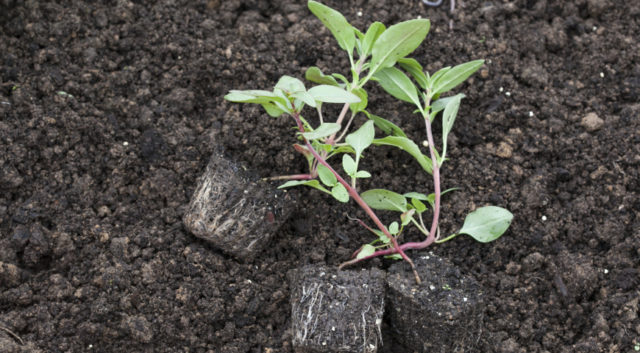
Godetia should be transplanted into open ground before flowering begins.
Collection and storage of seeds
The seeds enter the maturity phase one month after the inflorescences wither and the seed capsule forms. Ripe grains are dark in color.
The seed pods are cut off and dried under natural conditions in a dry, well-ventilated place without exposure to sunlight at temperatures up to + 30 ⁰C.
The dried bolls are placed in textile bags and kneaded in hands to remove the peri-sperm membrane. Seeds freed from the capsule are stored in paper bags at room temperature in a dry place.
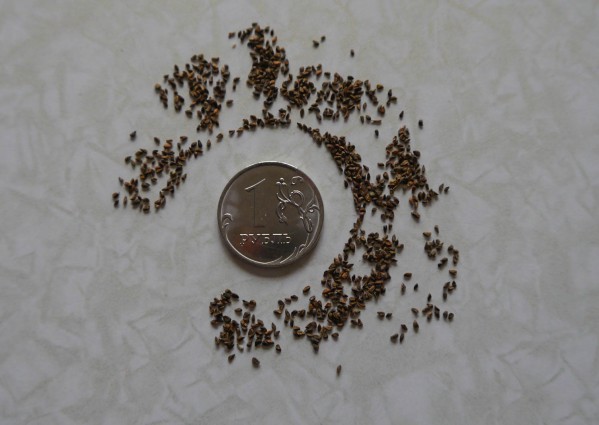
Seeds of hybrid varieties of Godetia should be purchased in specialized stores, since seed collected at home does not ensure the preservation of varietal characteristics
Conclusion
Growing godetia from seeds is accessible even to novice gardeners. Godetia appeared on Russian beds and flower beds in the mid-19th century. During this time, decorative culture took its rightful place as a dominant element of landscape design.
